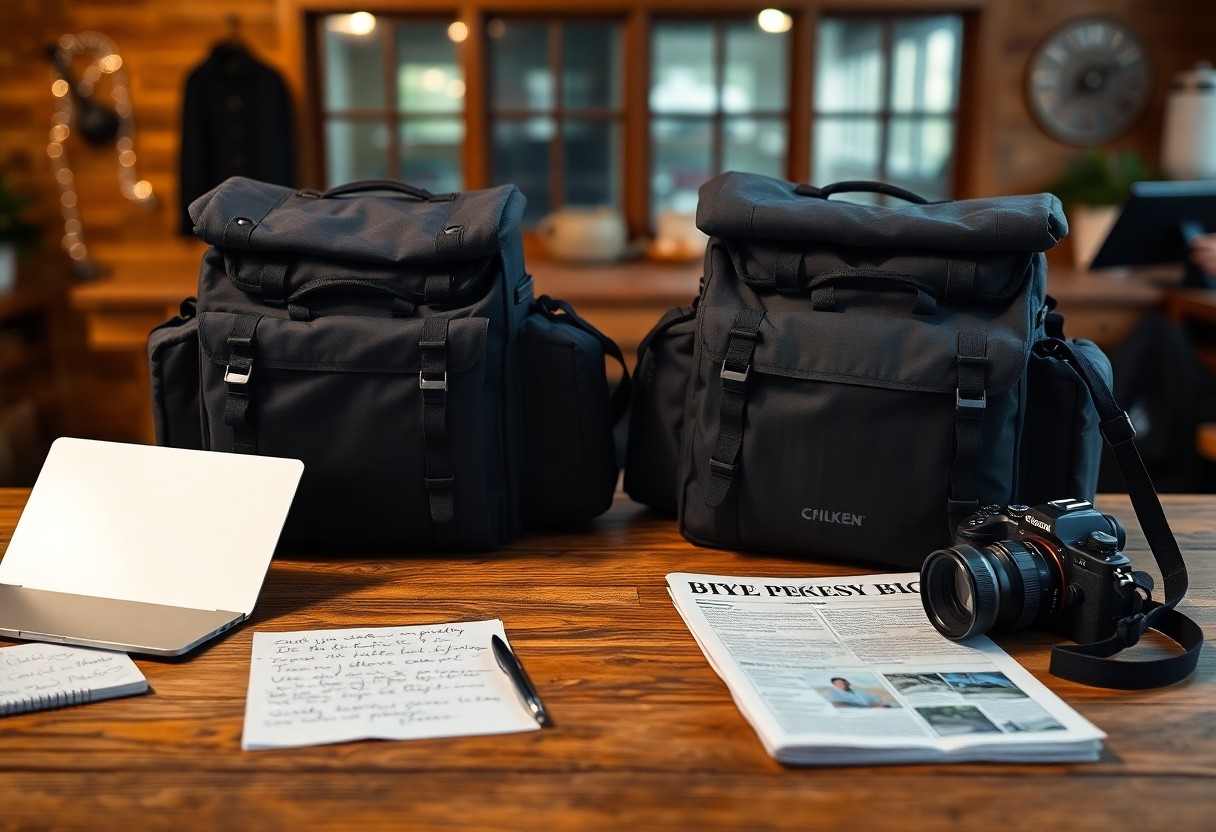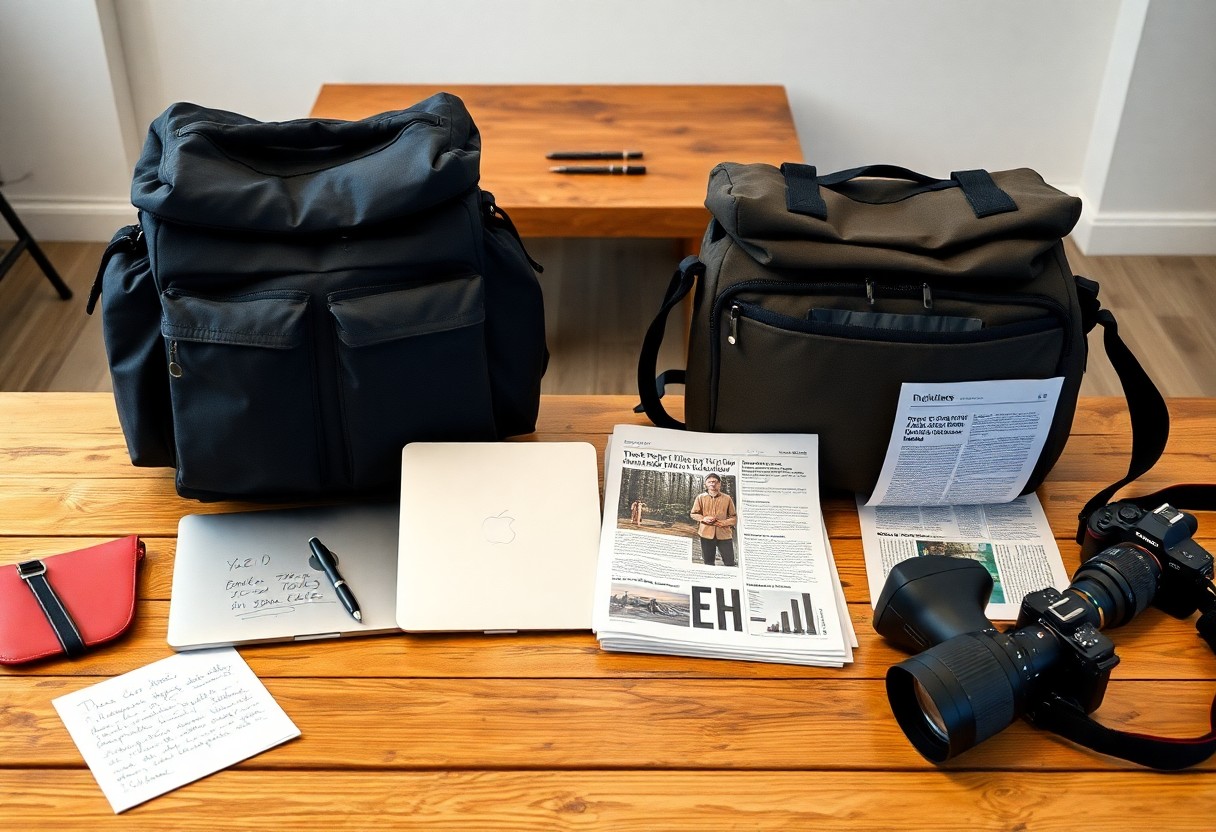Bikepacking offers a thrilling way to explore the outdoors, but choosing the right gear can be challenging. In this post, you will discover the differences between cheap and expensive bikepacking bags, helping you to make an informed decision for your next adventure. You’ll find out how the materials, durability, and features affect your overall experience, especially in adverse conditions. With real-world testing, you will learn which options provide better performance and value for your money, ensuring you stay safe and comfortable on the trail.
Priceless Lessons: What Budget Bikepacking Bags Teach Us
Opting for budget bikepacking bags often reveals surprising insights about the vitals of bike travel. While these bags may lack the flashy features of their pricier counterparts, they teach you about prioritisation and the value of simplicity, encouraging you to focus on what truly matters during your adventures. They embody resilience born from necessity, helping you appreciate functionality over branding, and proving that you can initiate on transformative journeys without breaking the bank.
Performance Under Pressure: How Cost Affects Durability
Durability is a significant factor in bikepacking, and the cost often reflects the materials and construction quality. Budget bags may not endure the same level of abuse as high-end options, resulting in potential failures during your adventures. You might find seams fraying or materials tearing after only a few trips, whereas expensive bags use robust fabrics that resist wear and tear, thereby ensuring that your investment lasts through season after season.
Value for Money: Are Cheap Bags Worth the Investment?
Budget bikepacking bags can deliver decent performance, but their long-term value hinges on your usage patterns. If you’re an occasional rider, you might find that cheaper options suffice for your needs without harming your wallet. However, for serious bikepackers, continually replacing low-cost bags can rapidly erode any initial savings. Assessing your riding frequency and the anticipated mileage can guide you in determining whether these bags are genuinely worth the investment.
When you weigh budget bags against your biking habits, the question of value for money often leans towards practicality. If you initiate on frequent, lengthy trips, investing in higher-quality bags might mean fewer replacements down the line, reducing overall expenditure over time. Conversely, for short, casual outings, cheaper bags might prove adequate, allowing you to allocate funds elsewhere in your travel budget. Ultimately, understanding the balance between cost and performance can significantly impact your bikepacking experience and financial sensibility.
The Luxe Experience: Examining High-End Bikepacking Bags
Investing in high-end bikepacking bags often means embracing an unparalleled level of comfort and functionality. Luxury brands focus on both aesthetics and practicality, ensuring that each bag is not only visually appealing but also designed with the avid traveller in mind. This section dives into what sets premium options apart, from cutting-edge materials to thoughtful features that enhance your overall bikepacking experience.
Material Matters: The Technology Behind Premium Designs
Premium bikepacking bags typically feature advanced materials like ultralight nylon or waterproof fabric, providing exceptional durability and protection against the elements. These fabrics are often treated with special coatings that enhance water resistance, ensuring that your gear remains dry and safe during unexpected rain showers. Additionally, the stitching techniques employed can bolster the bag’s integrity, minimising the possibility of wear and tear over long distances.
Additional Features that Justify the Price Tag
High-end bikepacking bags often come equipped with multiple pockets, attachment points, and innovative closure systems. For instance, magnetic buckles allow for quick access while remaining secure. Additionally, some brands integrate reflective materials into their design for enhanced visibility during night rides. These thoughtful enhancements not only improve your riding experience but also enhance safety, making the investment worthwhile.
The integration of additional features can significantly transform your bikepacking adventures. Pockets designed for specific tools keep your importants organised and accessible, whilst roll-top closures coupled with compression straps ensure maximum stability, preventing items from shifting mid-ride. Some premium bags even incorporate hydration systems or removable liners that allow for easy packing and unpacking, thus optimising the storage experience. These thoughtful considerations are what elevate high-end bags from simply functional to truly exceptional companions on your cycling journeys.

The Great Debate: User Testimonials versus Professional Reviews
Balancing the insights of user testimonials against professional reviews creates a fuller picture of what bikepacking bags truly offer. You’ll find passionate endorsements from seasoned adventurers who swear by their budget finds, while experts provide analytical breakdowns highlighting performance metrics and durability tests. Both perspectives are invaluable—you gain from the raw experiences of your fellow travellers and the informed critiques of professionals who scrutinise every detail.
Real-World Experiences: Insights from Budget Buyers
Budget buyers often share anecdotes of their adventures, showcasing how affordable bikepacking bags have exceeded their expectations. Many feel that, although less expensive, these bags efficiently meet their needs during long rides. They appreciate the trade-off between price and functionality, emphasising that if cared for properly, budget bags can deliver commendable performance without putting a dent in your wallet.
Expert Opinions: What Industry Professionals Say
Industry professionals tend to highlight the materials and design innovations that distinguish premium bags from their budget counterparts. They argue that higher-priced options often include advanced fabric technologies, superior water resistance, and ergonomic features crafted for prolonged use. These professionals advise that while budget bags may perform adequately, investing in quality could lead to more enjoyable and hassle-free journeys over time.
Expert opinions indicate a substantial difference in overall longevity and performance between budget and high-end bikepacking bags. For instance, top-tier bags frequently utilise lightweight, ripstop nylon, which boasts a much higher tear resistance than the polyester often found in more affordable options. During testing, professionals found that bags costing £100 versus £300 could endure several times more wear before showing signs of significant degradation. This leads to a strong case for those serious about bikepacking to consider investing in quality gear for consistent and reliable performance on the trails.
Creating Your Custom Solution: Balancing Cost and Functionality
Devise a bikepacking bag setup that fits your unique needs and budget, combining practicality with personal preference. Affordable options can serve your basic requirements, but often require thoughtful assessment of their functionalities to ensure they meet the demands of your adventures. Assess every feature against what you genuinely need; the right balance between cost and utility not only saves you money but enhances your overall biking experience.
Assessing Your Needs: Determining Budget vs. Features
Clarifying your priorities is imperative in the process of selecting bikepacking bags. Evaluate the imperative features you require—size, durability, waterproofing—against your budget limitations. Setting a realistic budget encourages you to focus on the most critical features first, ensuring you find the ideal balance between cost effectiveness and quality without sacrificing performance on your trips.
DIY Modifications: Enhancing Performance of Affordable Bags
Making simple modifications to affordable bikepacking bags can significantly enhance their performance and longevity. Consider adding extra straps for better attachment, reinforcing seams with tape for added durability, or customising pockets for improved accessibility. Such adjustments not only improve function but allow you to personalise your gear to meet your specific adventure needs, turning budget options into highly efficient tools for your journeys.
For instance, utilising waterproofing spray on fabric components can transform a standard bag into a more weather-resistant option, elevating its versatility on unpredictable terrains. Patch kits can extend the life of your bag, allowing you to repair any minor damages instead of replacing them. Moreover, adding modular attachments or velcro patches can increase packing stability, giving you flexibility for various trip scenarios. Such enhancements can optimise both functionality and value, allowing your affordable choice to better suit your adventurous spirit.
Statistical Insights: Comparing Lifespans and Performance Ratings
Comparison of Lifespans and Performance Ratings
| Bag Type | Average Lifespan (Years) & Performance Rating (Scale of 1-10) |
|---|---|
| Cheap Bags | 2.5 Years, 5/10 |
| Expensive Bags | 5 Years, 9/10 |
Cost Analysis: Lifespan vs. Expense of Cheap versus Expensive Bags
Durability often correlates with upfront costs. Investing in expensive bikepacking bags typically yields a longer lifespan, averaging around five years, in contrast to the mere 2.5 years for cheap alternatives. The initial outlay may be steep, but over time, you might actually save money when considering replacement costs. Calculating the price per year reveals that opting for pricier options can be more cost-effective in the long run.
Performance Metrics: Which Bags Hold Up in Tough Conditions?
Performance metrics reveal that expensive bikepacking bags excel significantly in harsh weather and rough terrains. Their robust materials and superior craftsmanship possess greater resistance to water, punctures, and abrasions. In tests, high-end bags maintained structural integrity after numerous rugged outings, while cheaper options often exhibited wear and tear much sooner, compromising their usability.
Expensive bikepacking bags, often constructed with advanced materials like ripstop nylon and reinforced stitching, are designed to withstand extreme conditions. For instance, during a recent comparative field test, an expensive bag was subjected to rain, dust, and rugged trails for several weeks. It emerged almost unscathed, whereas a cheaper counterpart failed under similar conditions, leading to leaks and material degradation. This performance not only underscores the reliability of premium options but also influences your decision-making for future adventures.
Conclusion
Following this comparison, you will find that the choice between cheap and expensive bikepacking bags hinges on your specific needs and budget. While the more expensive options tend to offer superior durability and features, inexpensive bags can still provide satisfactory performance for casual trips. Ultimately, assessing your cycling frequency, the terrain you tackle, and your personal preferences will guide you in selecting the right bag to enhance your bikepacking adventures.
